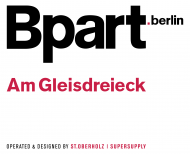Kurzthese
Beschreibung
Science fiction fans have been aware of exoskeletons since 1986 – the year in which James Cameron’s blockbuster Aliens came to cinemas. The final fight remains unforgettable, in which the protagonist Ripley transports the alien queen into space with the help of a robotic suit that she carries on her body. About thirty years later, such systems connected to the body have become a reality – albeit with a different primary focus than that of Ripley’s.
Today, exoskeletons – which are also known as power suits or simply ‘wearable robotics’ – are developed for three main application scenarios: In medicine, where they have already gained a commercial foothold in rehabilitation. In military operations, where they are intended to make soldiers more efficient in the combat field. However, the third application scenario is where experts currently see the greatest potential for their use: in areas where human labor cannot be meaningfully replaced by full automation or robotic systems. These include work processes in industrial production, like in the automotive industry, but also in other physically demanding work environments such as in construction, logistics and care work.
In a further step, exoskeletons are now embarking on the path towards the next phase of bionics. With the connection to the cloud, it will not only be their ability to exploit IoT applications that will change the impact exoskeletons will have on everyday life in the future. By applying the sensory data from exoskeletons that are in actual use, the pursuit of highly specialized research can be taken to an entirely new level. It herewith lays the foundation for machine learning and future AI capabilities.
What are the implications that exoskeletons will have of the future of work, personal health and everyday life? And who will benefit most? Join a panel of experts as they explore these and other issues arising through the anticipated sharp proliferation of exoskeletons in the near future.




